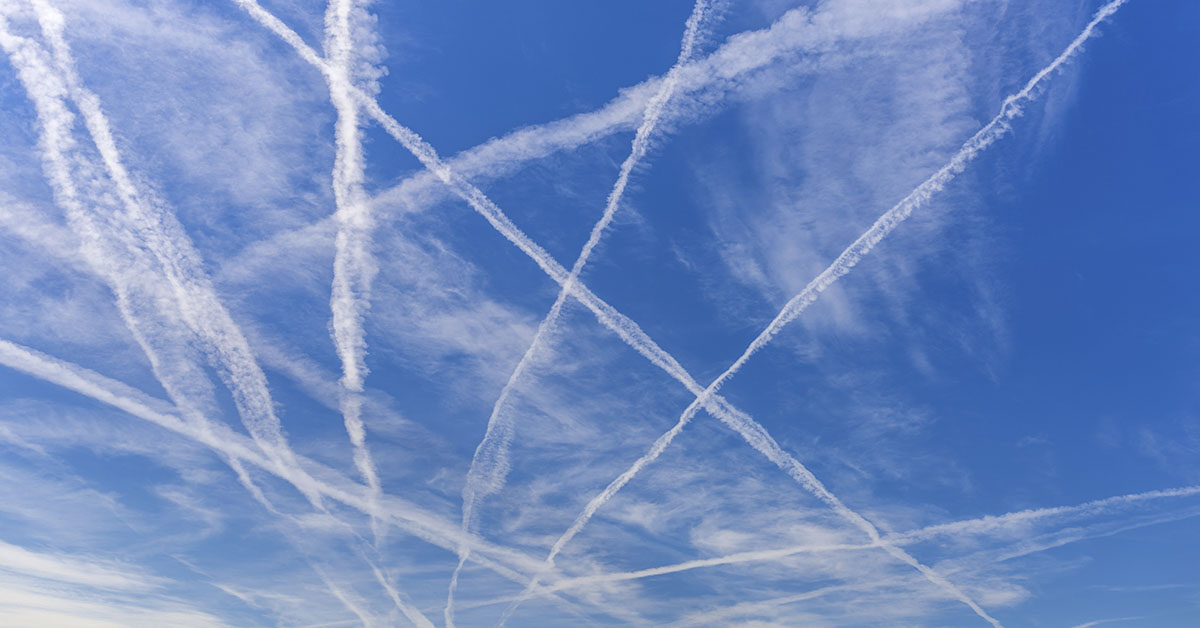Imagine the sky dotted with clouds, crisscrossed by the paths of birds and airplanes, and marked by peculiar streaks trailing behind the planes. But what exactly are these lines? Known as contrails or condensation trails, they form when water vapor from aircraft exhaust condenses and freezes. However, some believe these trails are more sinister than simple water vapor, suggesting they are part of a government conspiracy known as "chemtrails." Let's explore this contentious issue and see what experts have to say.
The Chemtrails Conspiracy Theory
The chemtrail conspiracy theory originated in the mid-1990s, drawing significant influence from a 1996 Air Force research paper titled "Weather as a Force Multiplier: Owning the Weather in 2025." According to the theory, governments or other powerful entities are releasing harmful chemicals into the atmosphere for purposes ranging from population control to weather manipulation. The theory lacks a unified narrative, with believers adapting and reinterpreting it to suit their biases, which further undermines its credibility.
Despite the absence of solid proof, belief in chemtrails has grown, spurred by social media and a general distrust of authority. The theory's adaptability allows it to survive scientific debunking. Moreover, the frequent sight of contrails reinforces its appeal, offering a tangible sign for those skeptical of government transparency or concerned about environmental degradation.
Debunking Chemtrails
Scientists and researchers have consistently dismissed the idea of chemtrails, pointing out the absence of credible evidence to support such claims and confirming that the trails behind planes are indeed water vapor. Harvard researchers have also highlighted the impracticality of concealing such a large-scale operation, which would require the complicity of thousands—similarly to the absurd claims that a global community is hiding the truth about a flat Earth. Moreover, the principles of atmospheric science clearly explain how contrails form and behave, yet despite these comprehensive dismissals, the belief in chemtrails continues, reflecting the difficulty of eradicating entrenched conspiracy theories. This persistence illustrates how people often prioritize their beliefs over logical reasoning, even to the extent of disregarding scientific evidence.
Recent research has also explored the environmental impact of contrails, suggesting they could exacerbate global warming by enhancing the greenhouse effect. This was particularly noticeable when air travel was halted after the September 11 attacks, allowing scientists to observe the direct environmental effects of a sudden reduction in contrails. These studies underscore that understanding aircraft emissions is crucial, revealing both the risks and the realities of our impact on the atmosphere. This knowledge is impartial, serving neither to exclusively condemn nor absolve but to inform our approach to environmental stewardship.
While the notion of chemtrails remains a popular conspiracy theory, it has been thoroughly debunked by scientific evidence and expert consensus. However, the social dynamics that fuel such beliefs and the genuine environmental concerns related to contrails merit ongoing attention, research, and concern. As we face the dual challenges of misinformation and environmental change, fostering critical thinking and scientific literacy is more important than ever for tackling complex issues like those posed by chemtrail theories.



